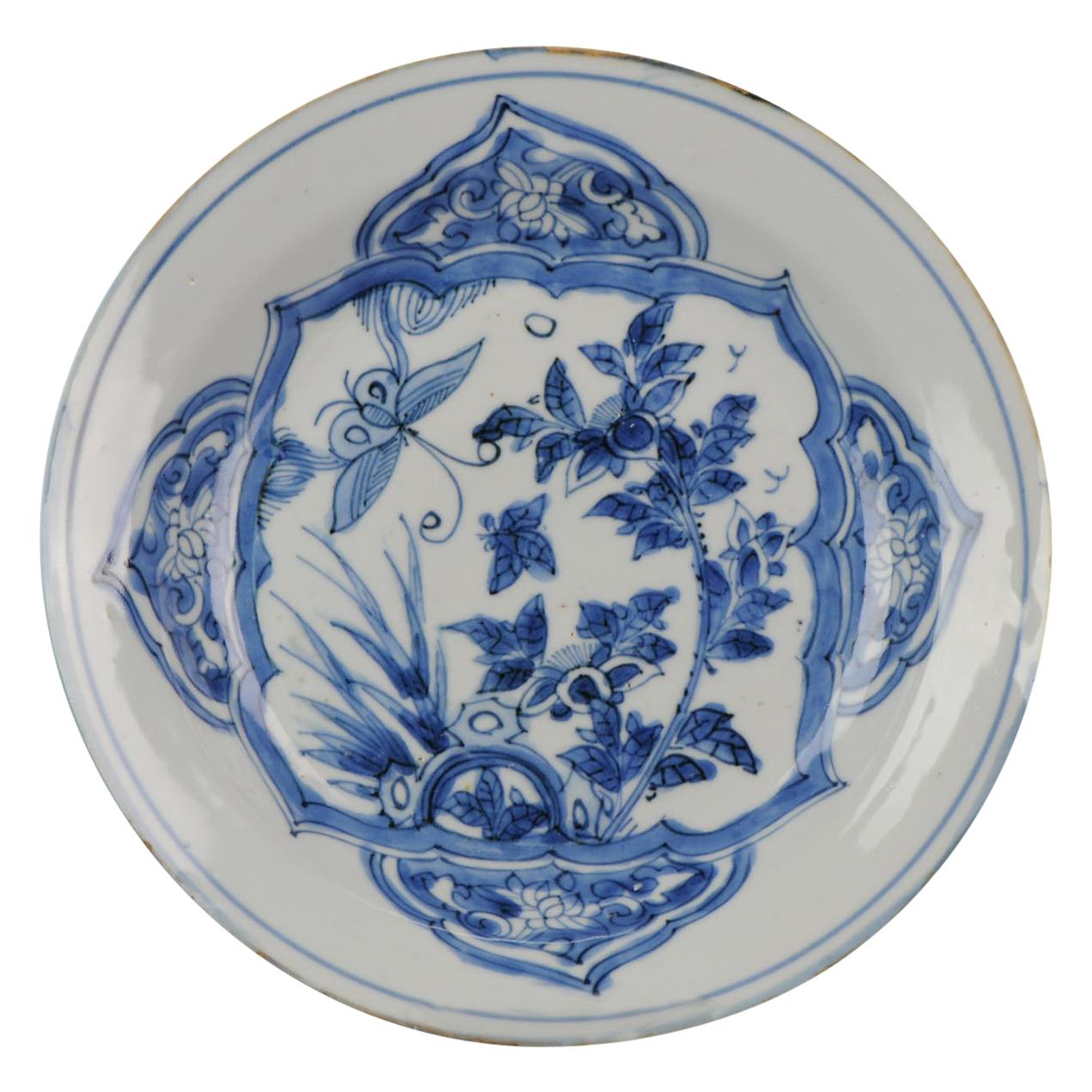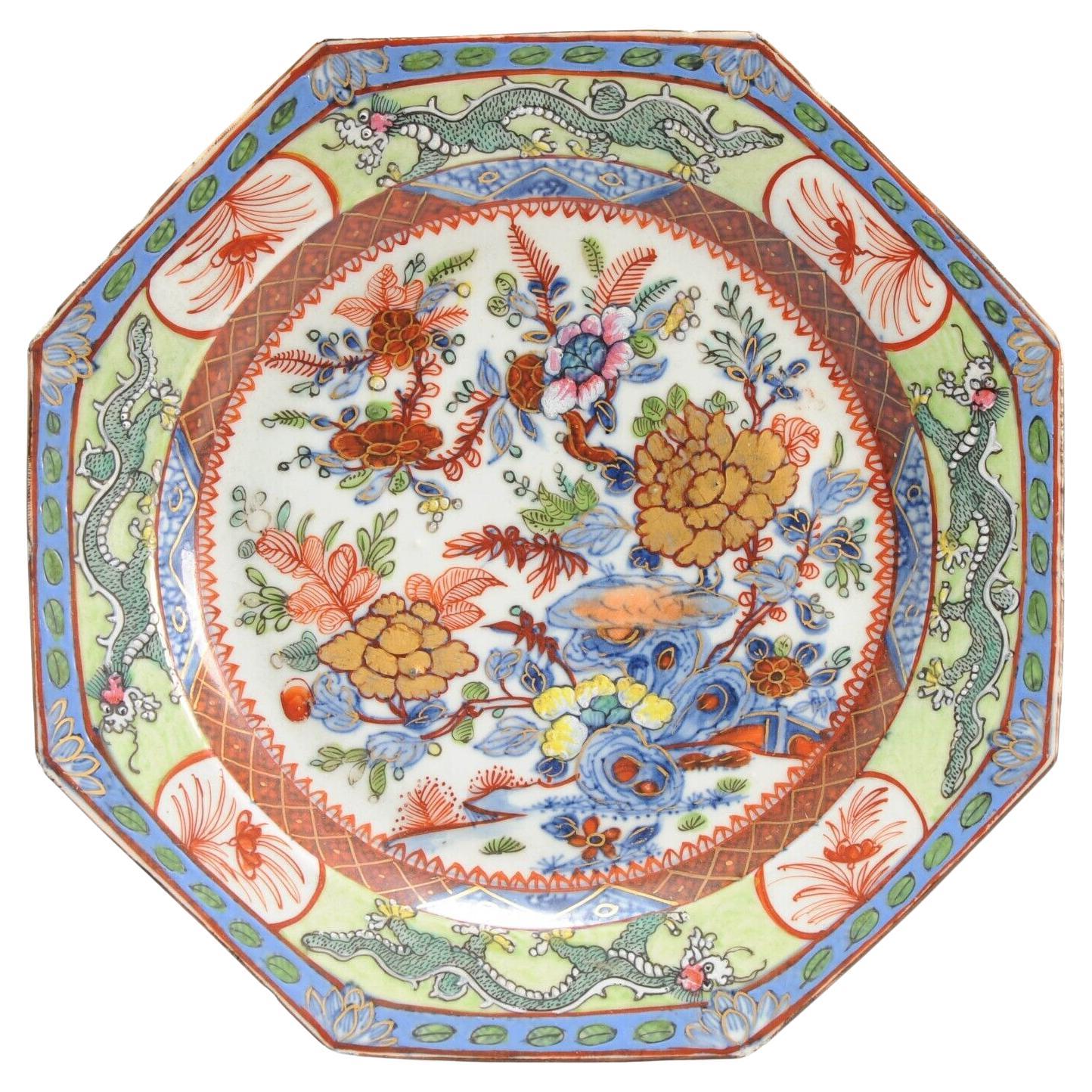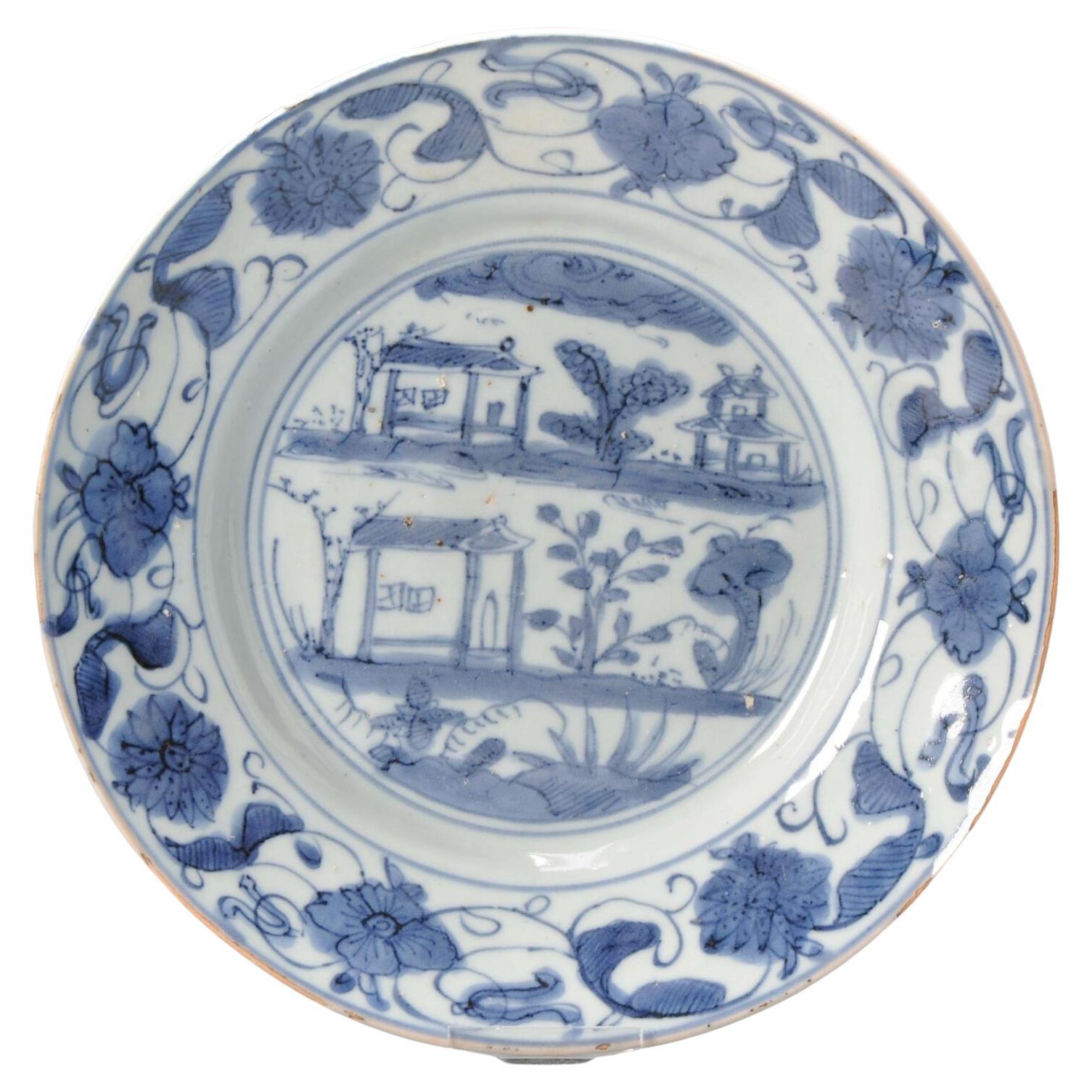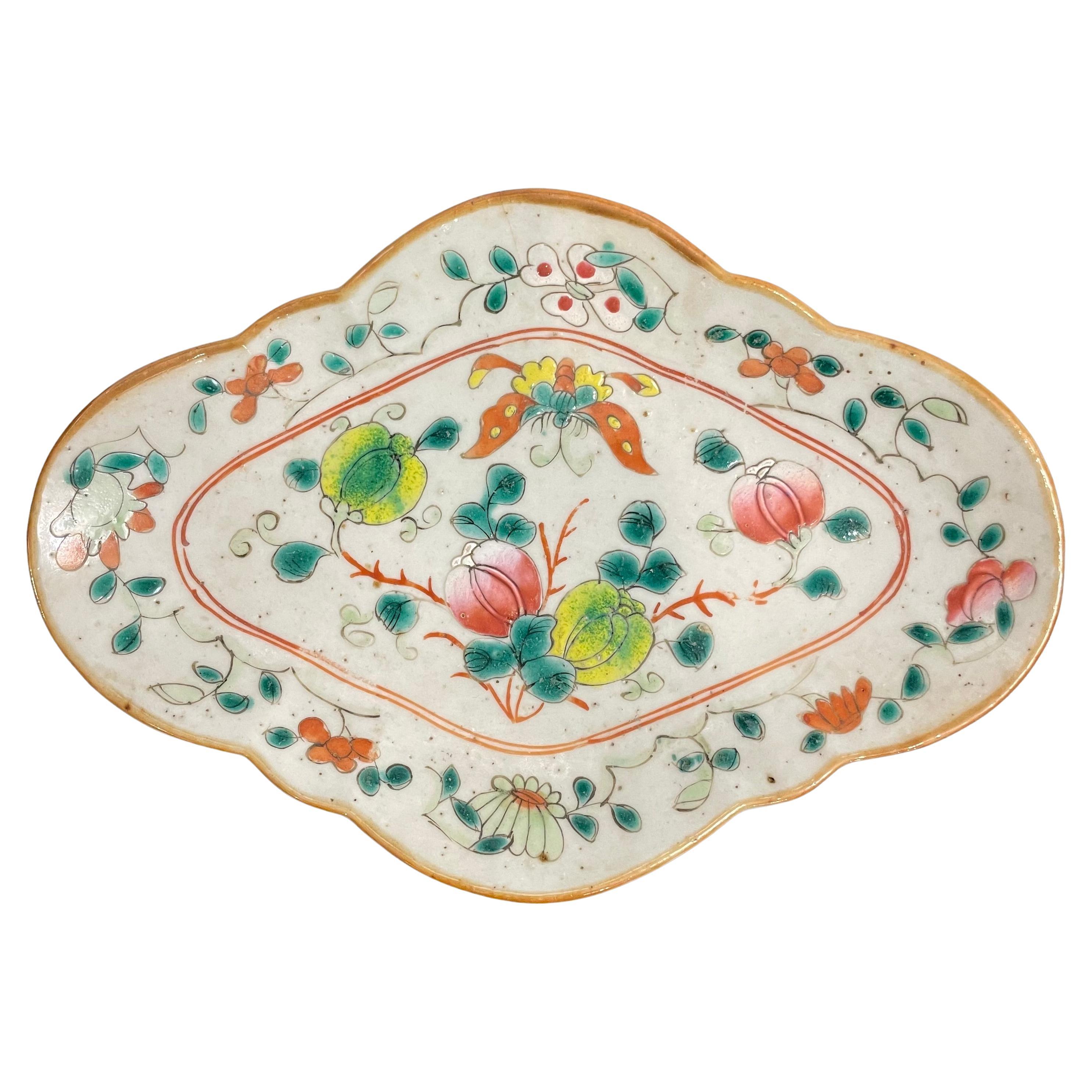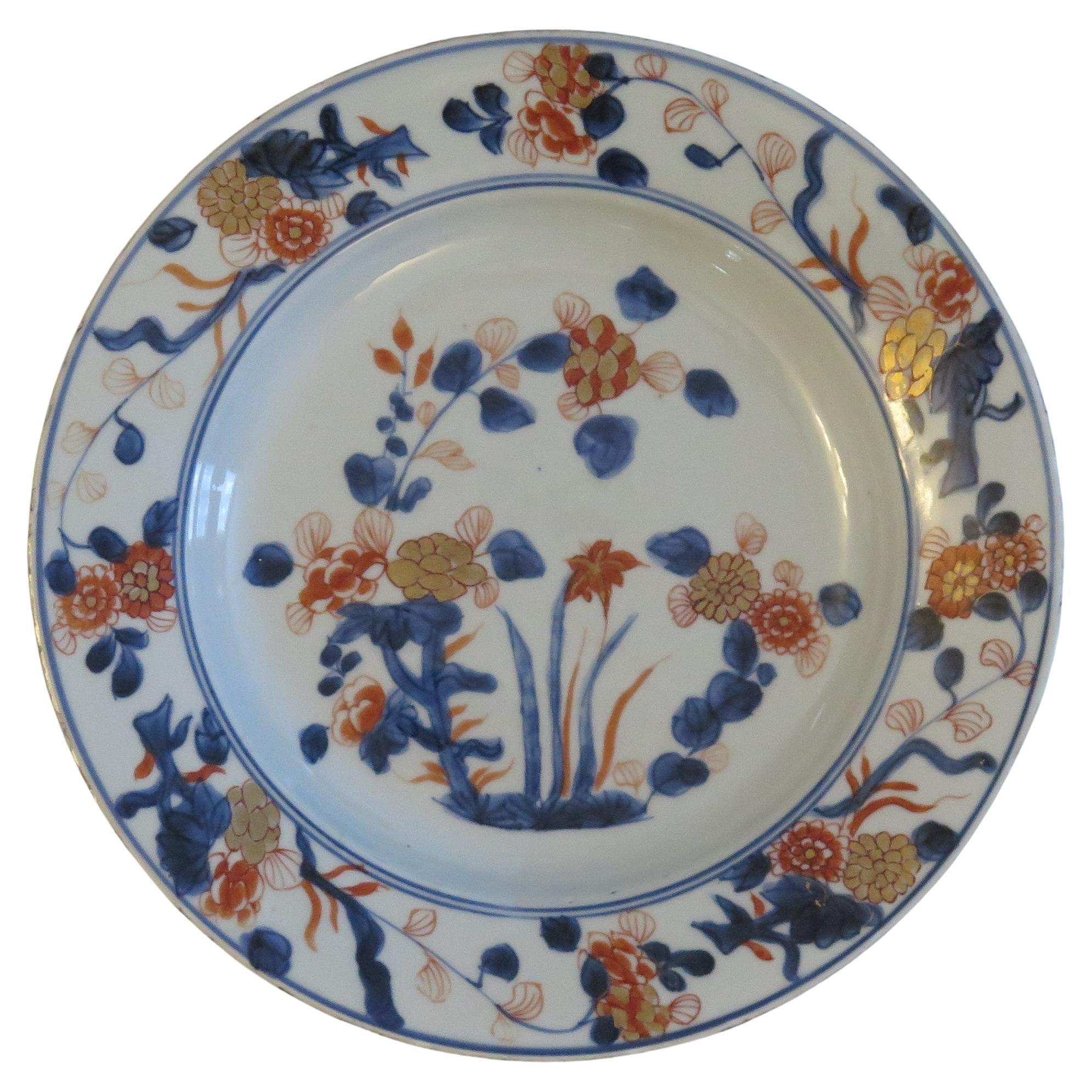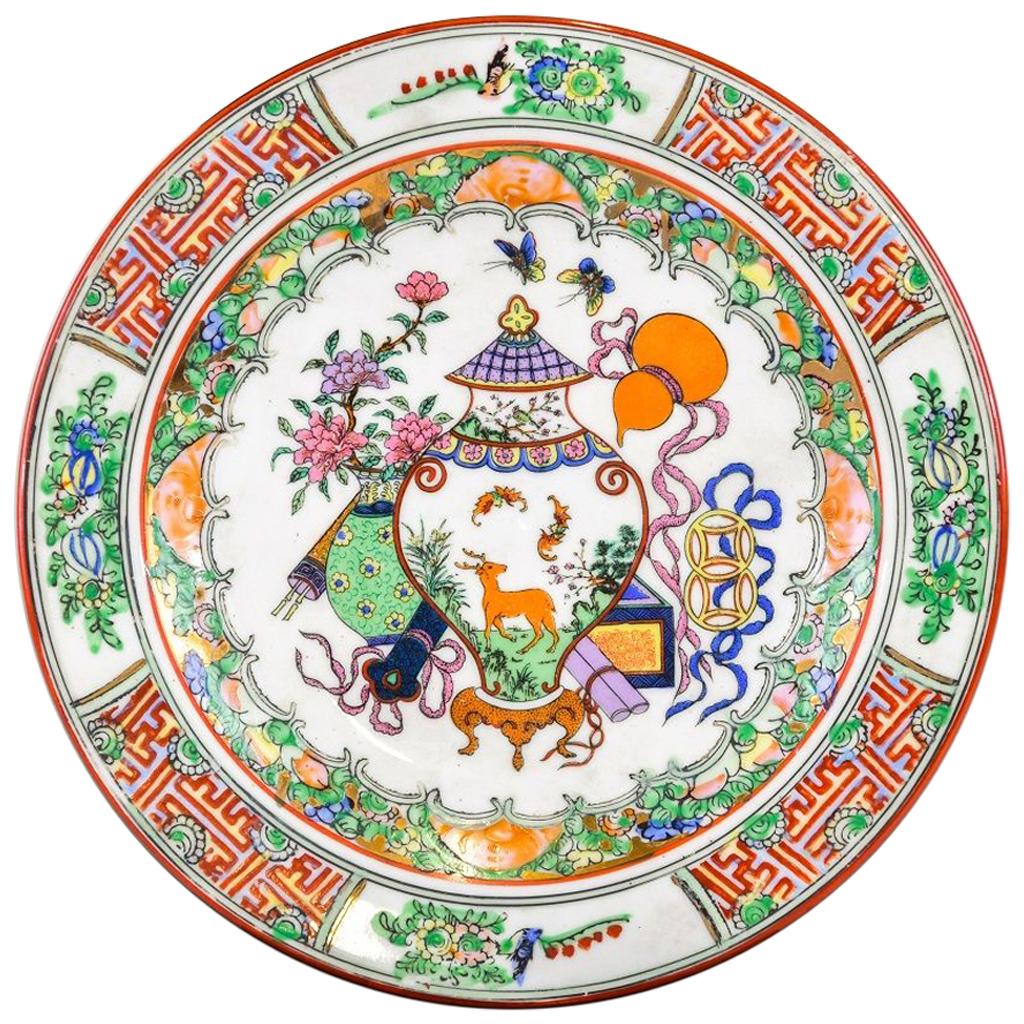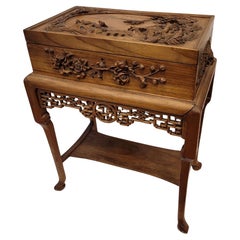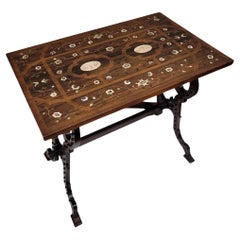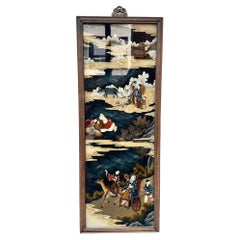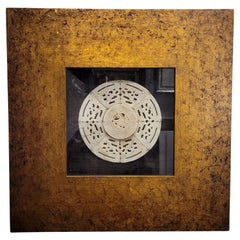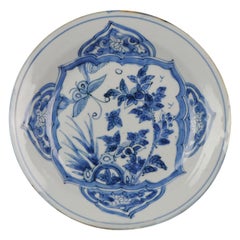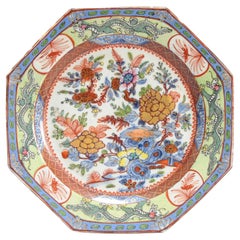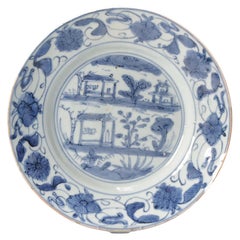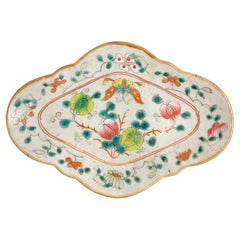Articles similaires à Chinese Qing porcelain plate, tray, Fitzhugh pattern, British East India Company
Chargement de la vidéo
Vous voulez plus d'images ou de vidéos ?
Demander au vendeur plus d'images ou de vidéos
1 sur 22
Chinese Qing porcelain plate, tray, Fitzhugh pattern, British East India Company
6 002,10 €TVA incluse
Expédition
Recherche du devis...La promesse 1stDibs :
Garantie d'authenticité,
Garantie de remboursement,
Annulation sous 24 heures
À propos de cet article
Technical data
Materials: Porcelain tray, wooden legs
Period: Qing Dynasty
Country of origin: China
Good condition for its age and use, with some flaws in the wooden structure
Overall dimensions: 70 x 95 x 80 cm
Porcelain dimensions: 70 x 58 cm
Exquisite Fitzhugh pattern porcelain plate or tray, inlaid in a cabinet that highlights its oval profile and raised on four slightly curved square legs.
The term "Fitzhugh" refers to a type of Chinese export porcelain produced primarily between 1780 and 1840, featuring blue and white designs. It originated with three members of two generations of the Fitzhugh family. Members of this family held important positions as ship captains and even as directors in the British East India Company. Within this company, high-ranking officials were allowed to engage in private trade. Between 1704 and the 1790s, porcelain pieces bearing this pattern were shipped to England.
The design usually includes a central medallion, although it is occasionally replaced by a coat of arms or monogram. The medallion is surrounded by four groupings of flowers representing the four seasons—peony for spring; lotus for summer; chrysanthemum for autumn; and prunus for winter—and symbols that typically represent the four virtues of the Chinese scholar: music, painting, logical thinking, and calligraphy. The design is framed with a decorative border that may be a lattice and spearhead pattern, sometimes known by the term "Nanking," or a more elaborate border featuring butterflies, honeycomb shapes, and floral ornamentation. The definition of the Fitzhugh porcelain group has evolved throughout history in both Europe and America.
In England, authentic Fitzhugh porcelain refers to porcelain that replicates designs associated with William Fitzhugh, a purser in Canton who shipped porcelain to England in 1778, 1789, and 1791. This design consists of a central medallion, four floral clusters, and a trellis-diaper lattice border with a spearhead.
A unique opportunity to acquire a museum-worthy piece!
The British East India Company (1599-1874)
The British East India Company was founded in 1599 by English entrepreneurs to trade with the East Indies, breaking the Dutch monopoly on the spice trade. In 1600, it received a Royal Charter from Queen Elizabeth I granting it a trade monopoly with that region for 15 years. Over time, it transformed into a joint-stock company dominated by wealthy merchants and aristocrats, and although the British government held no shares, it did exercise indirect control. The company eventually handled half of the world's trade, especially in goods such as cotton, tea, silk, opium, and salt.
In 1702, it merged with a rival company and became a major commercial and territorial power in India, with its own army and government functions. Its effective rule in India began in 1757 and ended in 1858, when, following a rebellion, the British Crown took direct control through the Government of India Act. Finally, due to financial problems and political changes, the company was dissolved in 1874, and its functions were absorbed by the British government.
It was primarily established to trade with the East Indies, especially India and China. It traded in products such as spices, tea, silk, cotton, salt, opium, and more. It came to control certain territories in India, acting as a kind of private government, with its own armies, laws, and administrative system, which allowed it to play a key role in the expansion of the British Empire in Asia.
Although its primary function was not artistic, the company had a significant impact on art, mainly indirectly, as it sponsored works of art, encouraged the fusion of European techniques and Eastern styles, and fostered the export of art, textiles, and exotic objects that influenced European fashion and design of the time.
A museum piece!!!
Technical data
Materials: Porcelain tray, wooden legs
Period: Qing Dynasty
Country of origin: China
Good condition for its age and use, with some flaws in the wooden structure
Overall dimensions: 70 x 95 x 80 cm
Porcelain dimensions: 70 x 58 cm
- Créateur:Margaret Fitzhugh Browne (Artiste)
- Dimensions:Hauteur : 70 cm (27,56 po)Largeur : 95 cm (37,41 po)Profondeur : 80 cm (31,5 po)
- Style:Exportation chinoise (De la période)
- Matériaux et techniques:
- Lieu d'origine:
- Période:1790-1799
- Date de fabrication:1798
- État:Usure conforme à l'âge et à l'utilisation.
- Adresse du vendeur:Valladolid, ES
- Numéro de référence:1stDibs : LU2943345387002
À propos du vendeur
4,7
Vendeur Or
Vendeurs premium dont la note est supérieure à 4,3 et le délai de réponse de 24 heures maximum
Établi en 1990
Vendeur 1stDibs depuis 2017
159 ventes sur 1stDibs
Temps de réponse habituel : <1 heure
- ExpéditionRecherche du devis...Expédition depuis : VALLADOLID, Espagne
- Politique des retours
Certaines parties de cette page ont été traduites automatiquement. 1stDibs ne garantit pas l'exactitude des traductions. L'anglais est la langue par défaut de ce site web.
Garantie d'authenticité
Bien qu'il soit peu probable que la situation se présente, dans le cas où vous rencontreriez un problème d'authenticité d'un article, contactez-nous dans un délai d'un an pour obtenir un remboursement intégral. DétailsGarantie de remboursement
Si votre article n'est pas conforme à la description, est endommagé pendant le transport ou ne vous est pas livré, contactez-nous sous 7 jours pour obtenir un remboursement intégral. DétailsAnnulation sous 24 heures
Vous disposez d'un délai de 24 heures pour annuler votre achat sans motif.Des vendeurs professionnels agréés
Nos vendeurs de renommée mondiale doivent respecter des normes strictes en matière de service et de qualité, afin de préserver l'intégrité de nos fiches produit.Garantie d'alignement des prix
Si vous constatez qu'un autre vendeur a mis en vente le même article à un prix inférieur sur un autre site, nous nous alignerons sur ce prix.Livraison en toute confiance à l'international
Notre réseau de transporteurs de premier ordre propose des options d'expédition spécialisées dans le monde entier, y compris des livraisons personnalisées.Plus d'articles de ce vendeur
Tout afficherCoffre d'appoint en Indochine de la Dynasty Qing, , bois sculpté sur pieds
Par Paquement Vietnam
Magnifique coffre d'Indochine de la fin de la dynastie Qing, début du 20e siècle, avec tablier et côtés sculptés.
Alliant utilité et esthétique, cette commode de la fin de la dynasti...
Catégorie
Antiquités, Début des années 1900, Vietnamien, Qing, Meubles de rangement
Matériaux
Bois
Table d'appoint ou buffet de style baroque italien nacre, os
Par Italian Sculptor 19 th Century
Superbe table d'appoint ou buffet de style baroque du 19ème siècle italien avec un plateau en incrustation florale raffinée en nacre et os sur bois précieux. Magnifique décor floral...
Catégorie
Antiquités, années 1860, italien, Baroque, Centres de table
Matériaux
Os, Nacre, Bois
3 781 € Prix de vente
20 % de remise
Miroir chinois de la dynastie Qing peint à l'envers
Par Chow's Oriental Furniture Co.
Superbe miroir peint à l'envers, datant de la dynastie Qing du XIXe siècle, représentant différentes scènes dans une narration verticale.
Différentes scènes comportant des éléments s...
Catégorie
Antiquités, années 1870, Chinois, Qing, Peinture et sérigraphie
Matériaux
Cristal
Disque Bi vert asiatique sculpté et encadré, jadéite
Par Chow's Oriental Furniture Co.
Exquis disque bi en jadéite sculpté et encadré (璧). Un disque bi est un disque de jade circulaire (plat) avec un trou au centre, utilisé dans la Chine ancienne. En l'occurrence, il e...
Catégorie
Vintage, années 1940, Chinois, Exportation chinoise, Antiquités
Matériaux
Cristal, Jade
Table d'angle rouge espagnole du 18ème siècle, console, baroque Andalusie
Par Soft Baroque
Pièce exceptionnelle représentative de l'art baroque espagnol. Il possède une console d'angle, la polychromie est d'origine, conservée en rouge vénitien, qui est combinée avec des dé...
Catégorie
Antiquités, années 1780, Espagnol, Baroque, Consoles
Matériaux
Feuille d'or
2 527 € Prix de vente
53 % de remise
Bout de canapé Charles X Boîte à couture, bois et laiton incrusté
Magnifique et très raffiné et élégante boîte à couture Charles X et table en forme de feuille , vers 1830 France. Cette petite table d'appoint est fabriquée en bois d'acajou avec d...
Catégorie
Antiquités, années 1830, Français, Charles X, Tables d'appoint
Matériaux
Métal
670 € Prix de vente
21 % de remise
Suggestions
Assiette chinoise ancienne en porcelaine Ming Wanli décorée de façon rare
Une assiette très joliment décorée et d'une taille rare
14-11-18-1-1
Condit
État général a (bon) beaucoup de rimfrits comme on peut s'y attendre pour ce type de porcel...
Catégorie
Antiquités, XVIe siècle, Chinois, Ming, Céramique
Matériaux
Porcelaine
1 440 € Prix de vente
20 % de remise
Ancienne assiette en porcelaine chinoise du 18ème siècle avec décoration de style Régence
Une très belle pièce de porcelaine du XVIIIe siècle décorée d'une belle scène. Le bleu sous glaçure et les autres émaux sous glaçure ont été réalisés plus tard en Europe.
Nous avons ...
Catégorie
Antiquités, XVIIIe siècle, Chinois, Regency, Plats décoratifs et vide-po...
Matériaux
Porcelaine
1 349 € Prix de vente
20 % de remise
Ancienne assiette en porcelaine chinoise Ming/transitionnelle, Maison européenne, pièce rare
J'ai vraiment trouvé quelque chose d'intriguant. Cette assiette est décorée de ce qui est souvent considéré comme des maisons européennes. Un élément que l'on retrouve sur les assiet...
Catégorie
Antiquités, XVIe siècle, Chinois, Ming, Céramique
Matériaux
Porcelaine
3 998 € Prix de vente
20 % de remise
Assiette chinoise Wucai, 19ème siècle
Assiette chinoise Wucai, 19ème siècle
Décoration de la maison, design d'intérieur et objets de collection.
Provenance : Collection privée de Victoria.
Dimension :
Hauteur : 4cm
Lar...
Catégorie
Antiquités, XIXe siècle, Chinois, Qing, Céramique
Matériaux
Porcelaine
108 € Prix de vente
50 % de remise
Assiette ou bol en porcelaine chinoise Qing Kangxi marqué et époque, vers 1700
Il s'agit d'une magnifique assiette ou d'un bol en porcelaine d'exportation chinoise peinte à la main, de la période Qing, Kangxi, 1662-1722. La base porte la marque de la feuille d'...
Catégorie
Antiquités, Début du XVIIIe siècle, Chinois, Exportation chinoise, Céram...
Matériaux
Porcelaine
588 € Prix de vente
41 % de remise
Vieille assiette en porcelaine chinoise:: fabriquée en Chine:: début du 20ème siècle
Cette assiette en porcelaine est un objet décoratif original réalisé en Chine par une manufacture chinoise, au début du 20e siècle.
Elle est décorée d'ornements géométriques et f...
Catégorie
Début du 20ème siècle, Chinois, Antiquités
Matériaux
Céramique
196 € Prix de vente
30 % de remise
